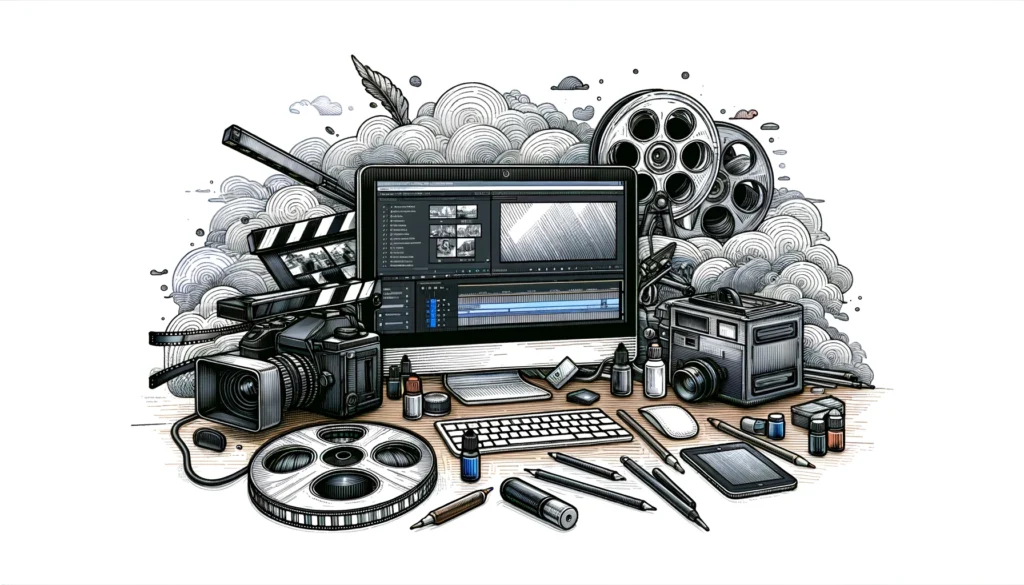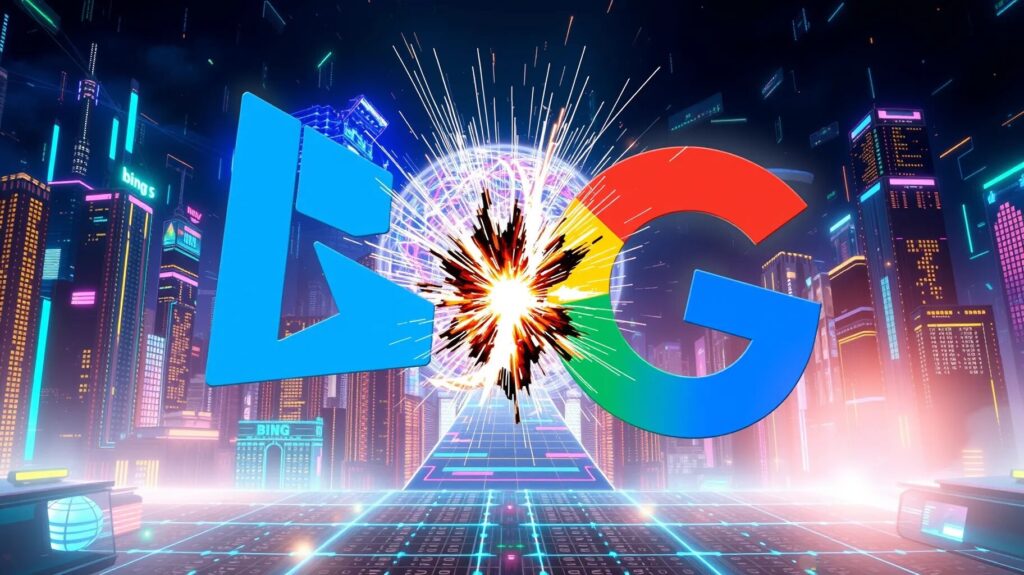
Recent developments in Text-to-Video AI have been significant, with major advancements from companies like OpenAI and Google. OpenAI has introduced “Sora,” a new generative video model capable of producing high-quality, up to 60-second videos from text descriptions.
This model combines diffusion models with transformer neural networks, allowing it to handle diverse video types and maintain consistency in longer videos. Sora’s videos are noted for their realistic physics and reduced “uncanny valley” effects, making them appear more natural and lifelike than previous AI-generated videos
Sora: A New Era in Video Creation
OpenAI has done it again. With the introduction of Sora, a state-of-the-art text-to-video AI model, content creation has taken a revolutionary leap forward. This groundbreaking technology can transform simple text prompts into vivid, dynamic videos. Whether you’re a filmmaker, educator, or marketer, Sora promises to unlock new creative horizons. In this article, we’ll delve into the features, applications, and implications of Sora, exploring how it can transform the way we produce visual content.
The Power Behind Sora: How It Works
Text-to-Video Synthesis
At the core of Sora lies the concept of text-to-video synthesis. Imagine typing a description of a sunny day at the beach and watching as a realistic video materializes before your eyes. This isn’t just science fiction; it’s the power of Sora. Utilizing advanced diffusion models and transformers, Sora begins with static noise and iteratively refines it into a detailed video frame, effectively translating textual instructions into visual narratives.
Diffusion Modeling
Sora employs diffusion modeling, a technique that starts with a noisy frame and progressively removes the noise to reveal a clear, detailed image. This method allows for the creation of high-definition video content that faithfully represents the given text prompt. By learning from a vast dataset of text paired with video clips, Sora understands how words can be translated into visual scenes.
Key Features and Capabilities
Complex Scene Generation
Sora excels at generating complex scenes featuring multiple characters, intricate backgrounds, and dynamic camera movements. This capability is particularly valuable for filmmakers and animators, who can draft trailers, visualize scenes, and even produce short films directly from a script.
Animation from Static Images
Beyond creating videos from text, Sora can animate static images. This feature allows users to extend existing videos or fill in missing frames, enhancing the continuity and fluidity of the visual content. For example, an educator could animate historical images to bring history lessons to life.
Diverse Applications
The potential applications of Sora are vast and varied:
- Film and Animation: Drafting trailers, visualizing scenes before production, and creating animated shorts.
- Education: Bringing lessons to life with engaging, animated videos.
- Marketing: Producing eye-catching promotional videos and dynamic advertisements.
Safety and Ethical Considerations
Addressing Potential Misuse
As with any powerful technology, there are significant ethical considerations. OpenAI is proactively addressing these by conducting extensive safety testing with domain experts in misinformation, bias, and content safety. These red teamers simulate potential misuse scenarios to identify vulnerabilities and ensure the AI behaves as intended.
Ensuring Responsible Use
OpenAI is committed to ensuring that Sora is used responsibly. The company is developing robust safeguards to prevent the creation of misleading or harmful content. By working with experts and gathering feedback from the creative community, OpenAI aims to refine Sora’s capabilities while mitigating risks.
Navigating Sora’s Limitations
Current Constraints
Despite its impressive capabilities, Sora is not without limitations:
- Video Length: Currently, Sora can only generate videos up to one minute long, which may not suffice for more extensive storytelling.
- Complex Prompts: Sora might struggle with particularly complex or ambiguous prompts, leading to less accurate video representations.
- Visual Artifacts: Occasional imperfections or inconsistencies in the generated videos can detract from the overall quality.
Future Enhancements
OpenAI plans to address these limitations by extending the maximum video length, improving the model’s understanding of complex prompts, and reducing visual artifacts. These enhancements aim to make Sora a more robust and versatile tool for a wide range of applications.
The Competitive Landscape
Rivals in Text-to-Video AI
Sora is not alone in the text-to-video AI space. Competitors like Google’s Lumiere and other models such as Runway and Pika are also making strides in this field. Each model brings its unique strengths and focuses to the table, contributing to the rapid advancement of video generation technology.
Unique Selling Points
What sets Sora apart is its unique combination of diffusion models and transformers, allowing it to generate hyper-realistic videos that closely adhere to user prompts. This makes Sora a formidable tool in the competitive landscape of text-to-video AI models.
Real-World Applications and Success Stories
Transforming Filmmaking
Filmmakers have started using Sora to draft trailers and visualize scenes before production. By generating quick video prototypes from scripts, filmmakers can explore different creative directions without the need for costly and time-consuming shoots.
Enhancing Education
Educators are leveraging Sora to create engaging video content for their lessons. Animated historical events, scientific explanations, and interactive storytelling are just a few ways in which Sora is revolutionizing the educational landscape.
Boosting Marketing Campaigns
Marketers are tapping into Sora’s capabilities to produce dynamic advertisements and promotional videos. By generating videos that are tailored to specific products and campaigns, companies can create more personalized and impactful marketing content.
Comparison Table: Sora vs. Competitors
| Feature | Sora | Lumiere (Google) | Runway | Pika |
|---|---|---|---|---|
| Video Length | Up to 1 minute | Up to 30 seconds | Up to 45 seconds | Up to 1 minute |
| Complex Scene Generation | Yes | Yes | Yes | Yes |
| Animation from Static Images | Yes | No | Yes | No |
| Dynamic Camera Movements | Yes | Yes | No | Yes |
| User Feedback Integration | Yes | Limited | Yes | Yes |
| Safety Testing | Extensive | Moderate | Extensive | Moderate |
Experts have varied opinions on OpenAI’s Sora, reflecting both excitement and caution regarding its capabilities and potential impact.
Positive Perspectives:
- Innovative Creative Tool:
- Paul Trillo, a filmmaker, praised Sora for its ability to create visually stunning content without extensive post-production work. His projects, such as “Abstract” and “The Golden Record,” demonstrate Sora’s potential to revolutionize video production by offering new aesthetic possibilities and simplifying the creative process (MIT Technology Review).
- Don Allen Stevenson III, another filmmaker, highlighted Sora’s efficiency in generating imaginative and unique video content. He noted that Sora allowed him to quickly create and experiment with fantastical creatures for his documentary, saving significant time compared to traditional methods (Hindustan Times).
- Technical Advancement:
- Rowan Curran, a senior analyst at Forrester, emphasized that Sora’s ability to maintain consistency and length in videos represents a new opportunity for integrating AI-generated content into traditional media. This advancement could enable the creation of full-length narrative videos from minimal prompts, expanding the creative possibilities for filmmakers and content creators (Tech Xplore).
Concerns and Criticisms:
- Ethical and Societal Risks:
- Sam Gregory, executive director at Witness, a human rights organization, pointed out the dual nature of Sora’s capabilities. While it offers expressive potential for storytellers, it also poses significant risks for misinformation and misuse, particularly in politically sensitive contexts. The ability to generate photorealistic but fake videos could be exploited to mislead and deceive the public (MIT Technology Review).
- Anna Makanju, OpenAI’s vice president of global affairs, reiterated the importance of cautious deployment. She highlighted ongoing efforts to mitigate risks by working with safety testers and developing detection tools to prevent the spread of misleading content (Tech Xplore).
- Technical Limitations:
- Some commentators, like Ed Zitron, have noted that Sora’s videos can sometimes exhibit unsettling glitches, placing them in the “uncanny valley.” These imperfections can detract from the realism and coherence of the generated content, making it challenging to use Sora for certain applications (Tech Xplore).
- Resource Intensity and Practicality:
- Critics also argue that AI video tools, including Sora, are currently too expensive and resource-intensive for widespread use. The need for extensive computational power and the challenges in harmonizing styles across clips limit their practicality for large-scale or commercial projects (Tech Xplore).
Overall, experts see Sora as a groundbreaking tool with the potential to transform video production and creative storytelling. However, they also emphasize the need for careful consideration of ethical implications and technical limitations to ensure its responsible and effective use.
Conclusion: The Future of Video Creation with Sora
Sora by OpenAI represents a significant leap forward in the field of AI-driven content creation. As this technology continues to evolve, it promises to unlock new creative horizons and empower individuals and businesses to tell stories in entirely new ways. The excitement also comes with a responsibility to ensure these tools are used thoughtfully and ethically. As Sora prepares for a broader release, it stands poised to transform the world of video creation.
For more information and updates on Sora, you can visit OpenAI’s official page on Sora or check out OpenAI’s help center.





